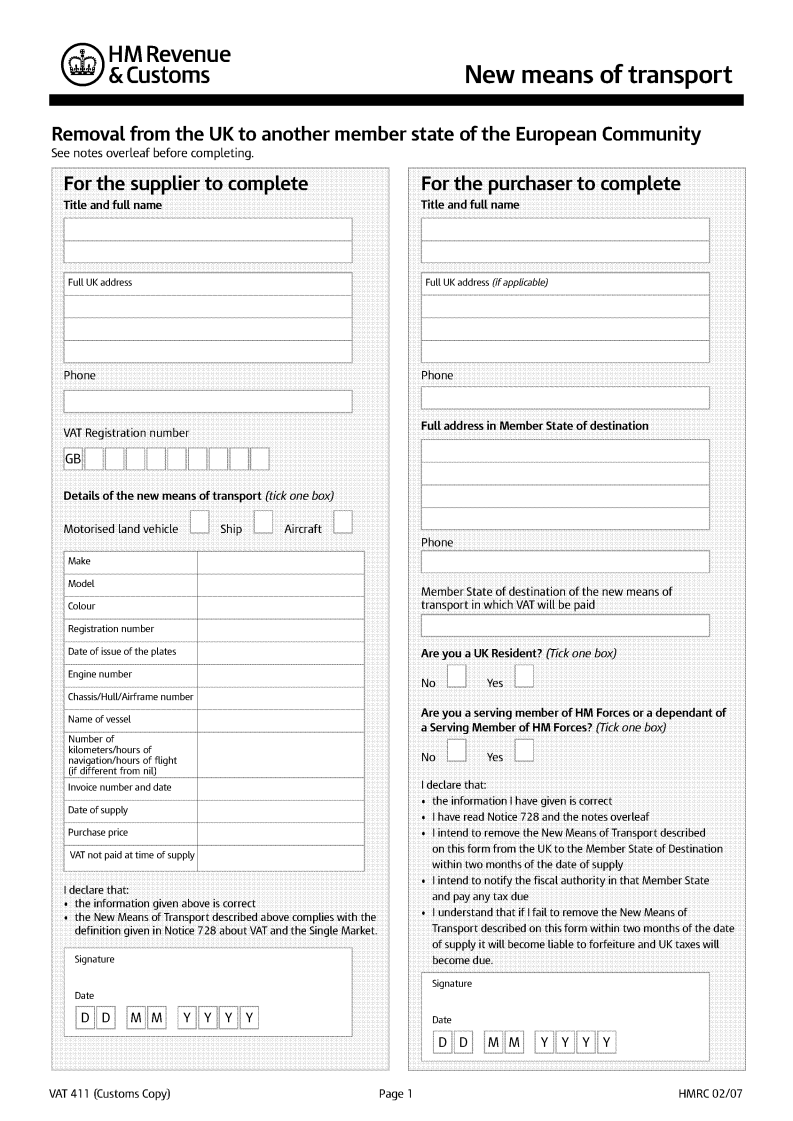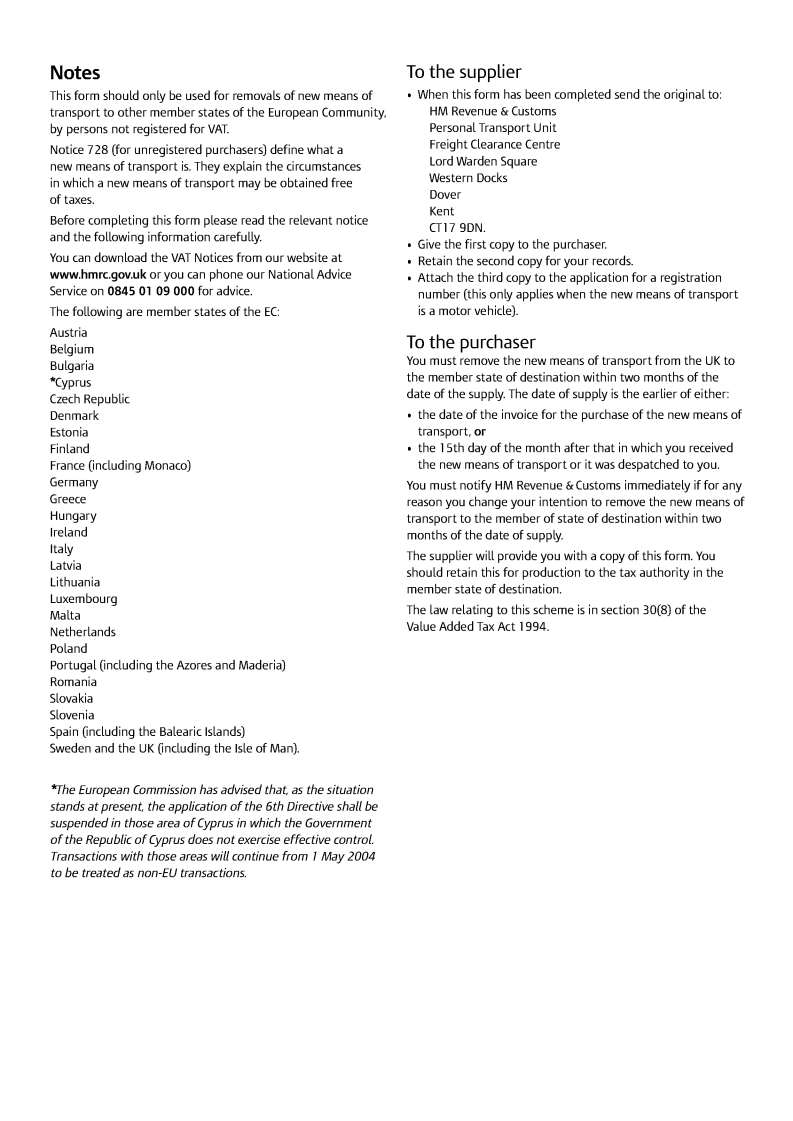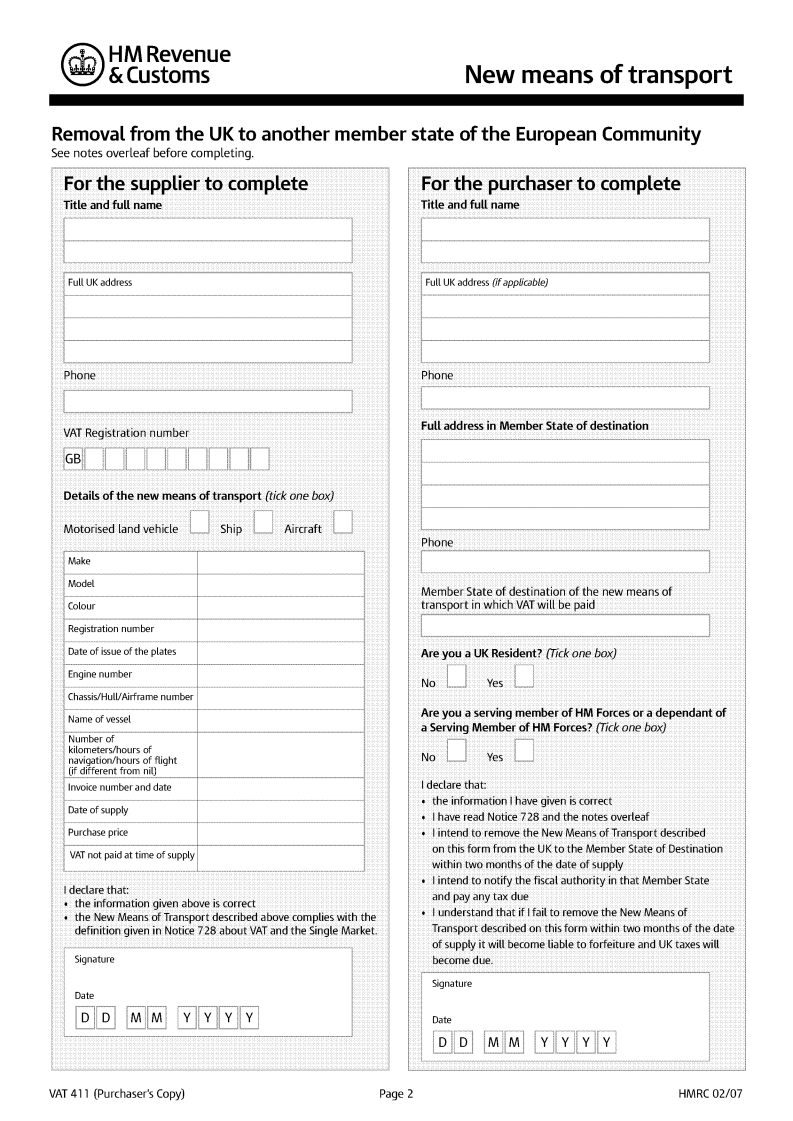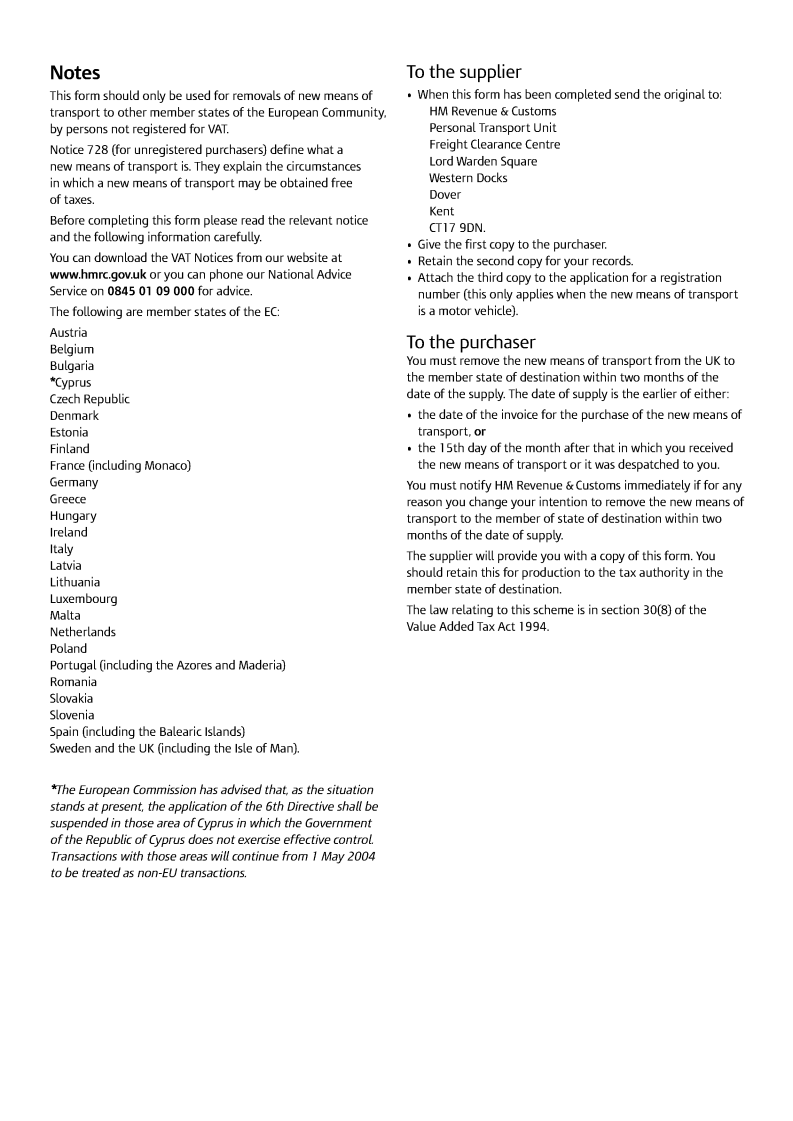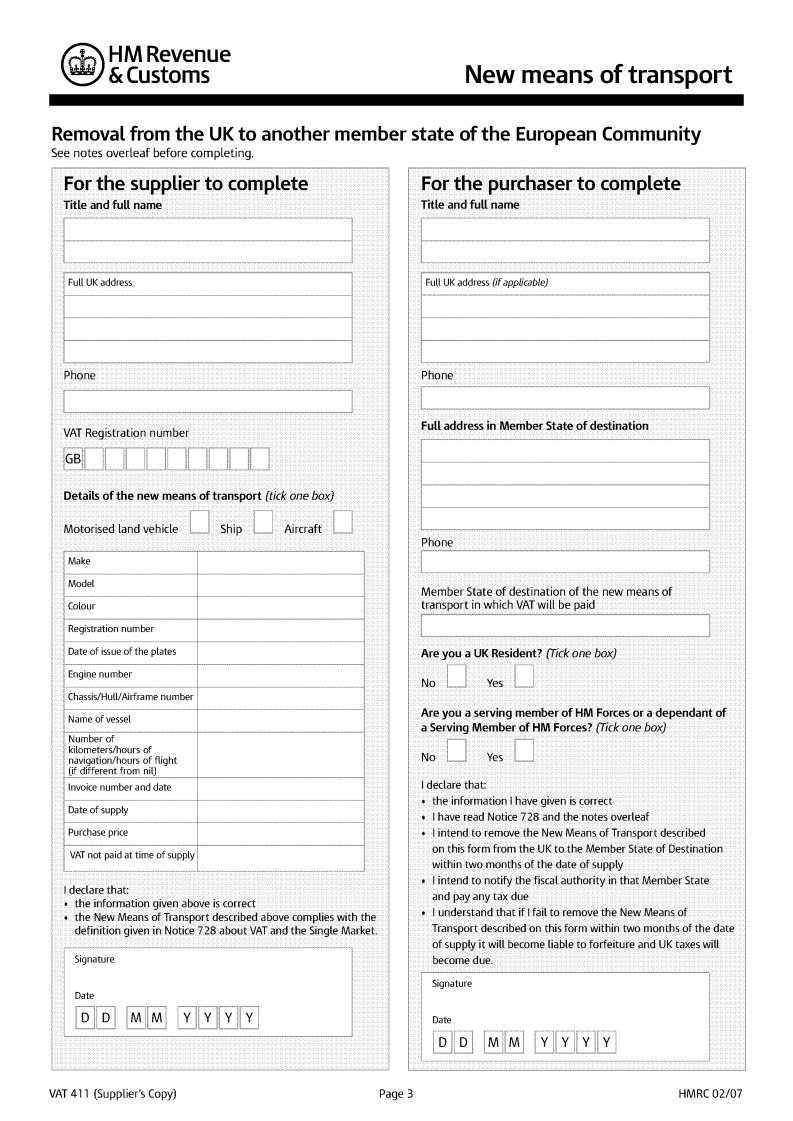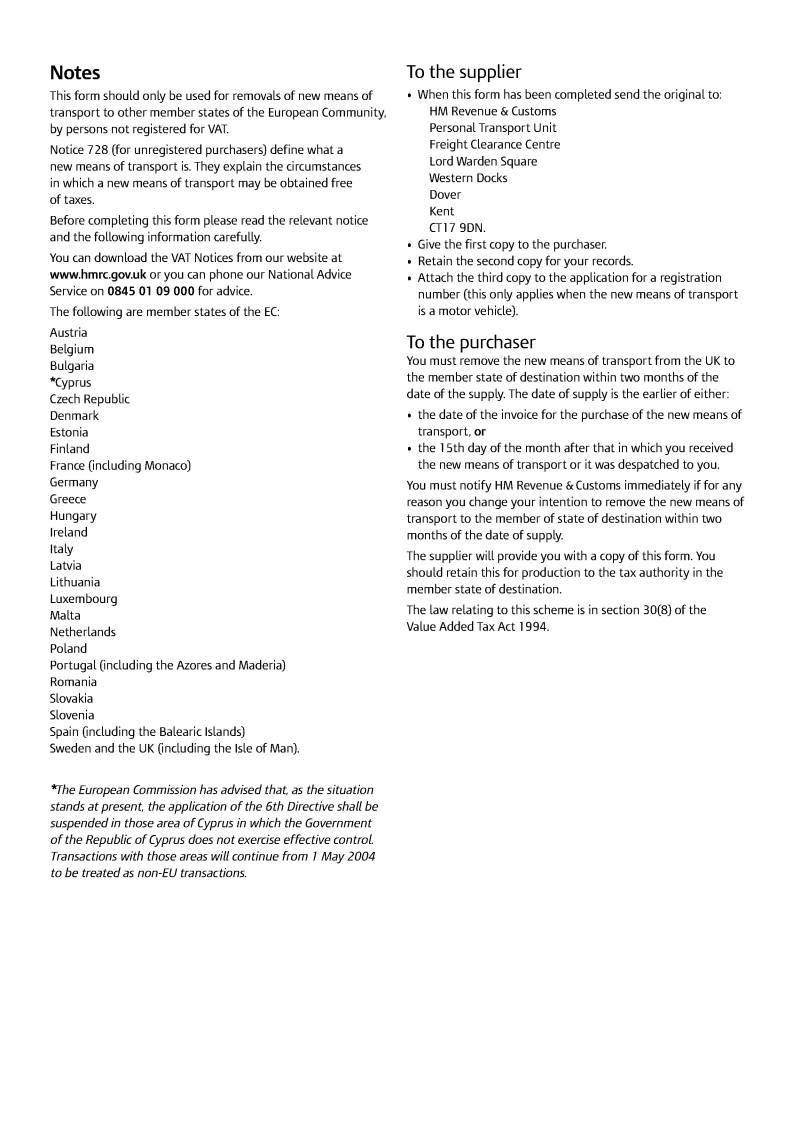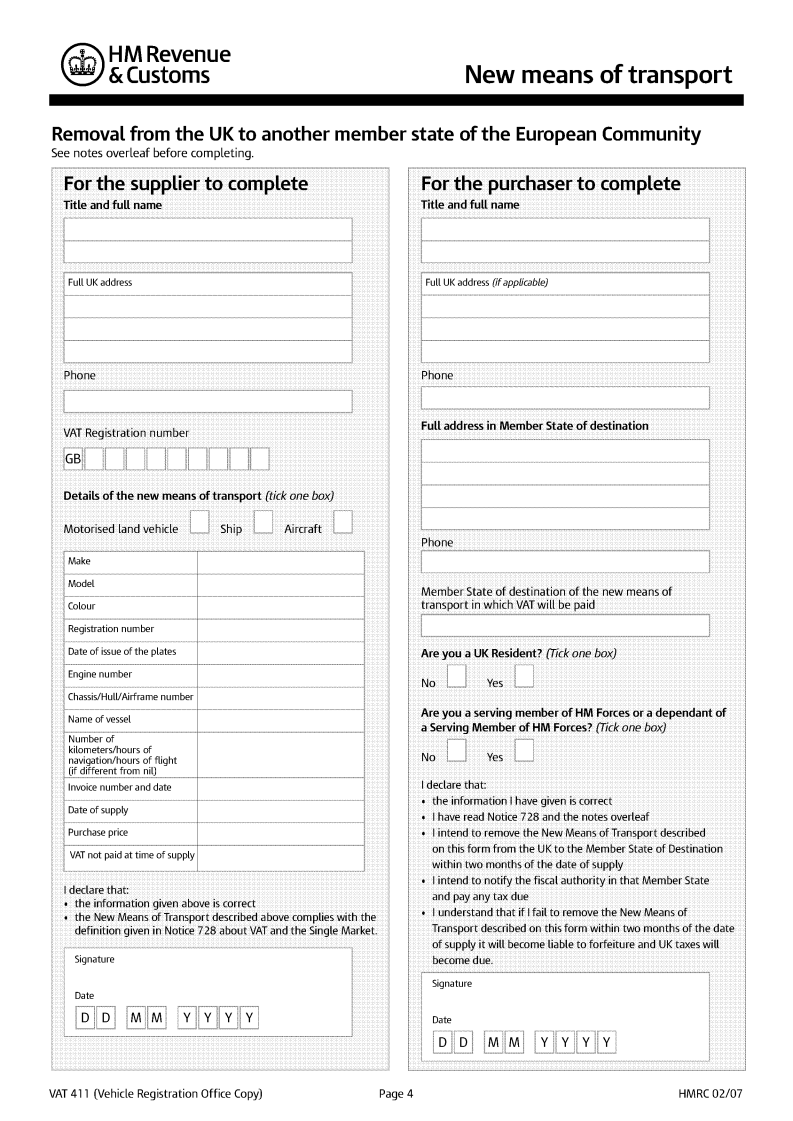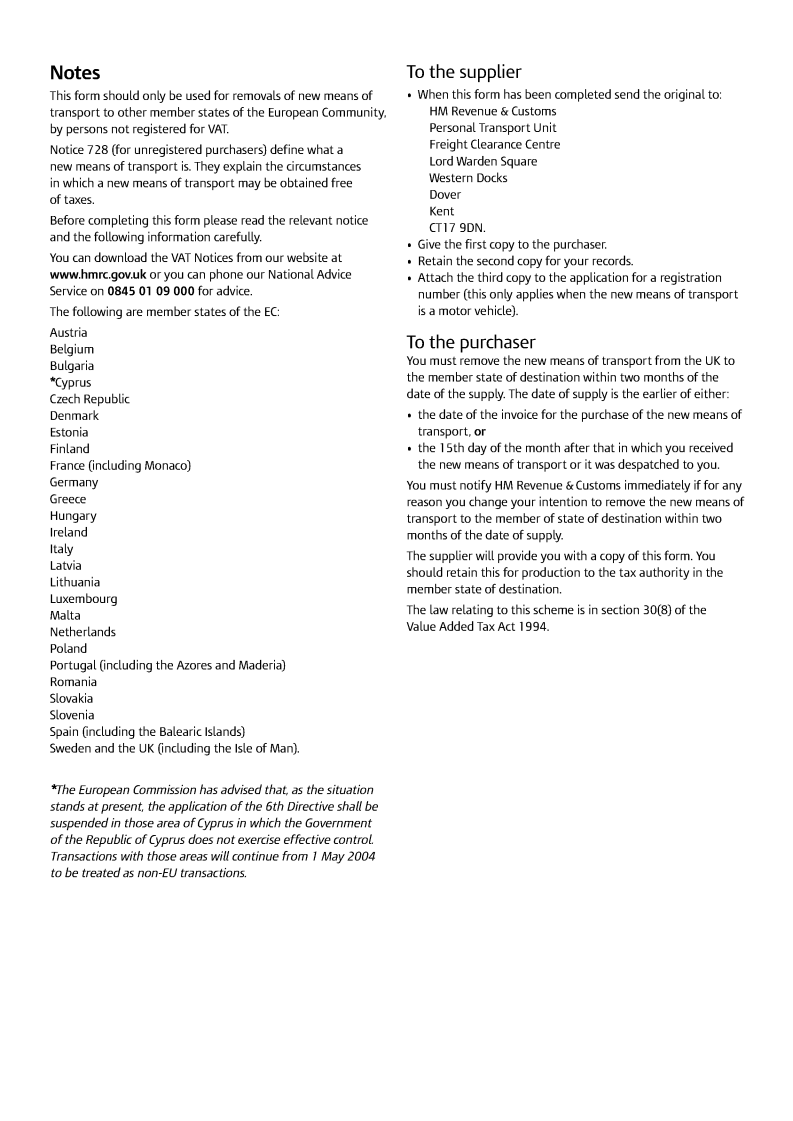Statutory Instruments
2007 No. 768
value added tax
The Value Added Tax (Amendment) (No.2) Regulations 2007
Made
8th March 2007
Laid before the House of Commons
9th March 2007
Coming into force
1st April 2007
The Commissioners for Her Majesty’s Revenue and Customs make the following Regulations in exercise of the powers conferred by sections 25(1), 26(1), (3) and (4) and 30(8) of, and paragraphs 2(1), (3), (7) and (11) of Schedule 11 to, the Value Added Tax Act 1994(1):
1. These Regulations may be cited as the Value Added Tax (Amendment) (No.2) Regulations 2007 and come into force on 1st April 2007.
2. The Value Added Tax Regulations 1995(2) are amended as follows.
Cash accounting
3. In regulation 58(1)(a) (admission) for“£660,000” substitute “£1,350,000”.
4. In regulation 60(1) (exit) for “£825,000” substitute “£1,600,000”.
5. In regulation 61(2) (rules on withdrawal) for “£660,000” substitute “£1,350,000”.
Input tax and partial exemption
6. In regulation 99(1)(a) before “103” insert “102,”.
7. In regulation 101—
(a)for sub-paragraphs (b)(i) to (v) of paragraph (3) substitute—
“(i)any supply of a description falling within Group 5 of Schedule 9 to the Act,
(ii)any other financial transaction, and
(iii)any real estate transaction,”,
(b)after paragraph (5) insert—
“(6) For the purposes of this regulation, a “real estate transaction” includes any grant, assignment (including any transfer, disposition or sale), surrender or reverse surrender of any interest in, right over or licence to occupy land.”.
8. In regulation 102—
(a)in paragraph (1) for “paragraph (2)” substitute “paragraphs (2) and (9)”,
(b)at the end of paragraph (1) omit all the words after “regulation 101” to the end,
(c)after paragraph (1) insert—
“(1A) A method approved or directed under paragraph (1) above—
(a)shall be in writing,
(b)may attribute input tax which would otherwise fall to be attributed under regulation 103 provided that, where it attributes any such input tax, it shall attribute it all, and
(c)shall identify the supplies in respect of which it attributes input tax by reference to the relevant paragraph or paragraphs of section 26(2) of the Act.”,
(d)in paragraph (2) for “within regulation 101(3)” substitute “of a description falling within regulation 101(3) whether made within or outside the United Kingdom”, and
(e)after paragraph (8) insert—
“(9) With effect from 1st April 2007 the Commissioners shall not approve the use of a method under this regulation unless the taxable person has made a declaration to the effect that to the best of his knowledge and belief the method fairly and reasonably represents the extent to which goods or services are used by or are to be used by him in making taxable supplies.
(10) The declaration referred to in paragraph (9) above shall—
(a)be in writing,
(b)be signed by the taxable person or by a person authorised to sign it on his behalf, and
(c)include a statement that the person signing it has taken reasonable steps to ensure that he is in possession of all relevant information.
(11) Where it appears to the Commissioners that a declaration made under this regulation is incorrect in that—
(a)the method does not fairly and reasonably represent the extent to which goods or services are used by or are to be used by the taxable person in making taxable supplies, and
(b)the person who signed the declaration knew or ought reasonably to have known this at the time when the declaration was made by the taxable person,
they may subject to paragraph (12) below serve on the taxable person a notice to that effect setting out their reasons in support of that notification and stating the effect of the notice.
(12) The Commissioners shall not serve a notice under this regulation unless they are satisfied that the overall result of the application of the method is an over-deduction of input tax by the taxable person.
(13) Subject to paragraph (14) below, the effect of a notice served under this regulation is that regulation 102B(1) shall apply to the person served with the notice in relation to—
(a)prescribed accounting periods commencing on or after the effective date of the method, and
(b)longer periods to the extent of that part of the longer period falling on or after the effective date of the method, save that no adjustment shall be required in relation to any part of any prescribed accounting period,
unless or until the method is terminated under regulation 102(3).
(14) In relation to any past prescribed accounting periods, the Commissioners may assess the amount of VAT due to the best of their judgement and notify it to the taxable person unless they allow him to account for the difference in such manner and within such time as they may require.
(15) The service of a notice on a taxable person under this regulation shall be without prejudice to the Commissioners’ powers to serve a notice on him under regulation 102A and any notice served under regulation 102A shall take priority in relation to the periods which it covers.
(16) In this regulation “the effective date of the method” is the date when the method to which the declaration relates first takes effect and may predate the date when the declaration was made.
(17) In this regulation and in regulations 102A, 102B, 102C and 107, where paragraph (1A)(b) above applies, “taxable supplies” includes supplies of a description falling within regulation 103.”.
9. At the beginning of regulation 102A(1) insert “Notwithstanding the Commissioners’ powers to serve a notice under regulation 102,”.
10. At the beginning of regulation 103 insert “Other than where it falls to be attributed under a method approved or directed by the Commissioners under regulation 102,”.
11. As a heading to regulation 103A insert “Attribution of input tax to investment gold”.
New means of transport
12. In Schedule 1, for the form numbered 13 (new means of transport for removal from the UK to another member state of the European Community) substitute the form numbered 13 in the Schedule to these Regulations.
Paul Gray
Mike Eland
Two of the Commissioners for Her Majesty’s Revenue and Customs
8th March 2007
Regulation 12
SCHEDULEForm No.13: New Means of Transport
EXPLANATORY NOTE
(This note is not part of the Regulations)
These Regulations, which come into force on 1st April 2007, amend Part VIII and Part XIV of, and Schedule 1 to, the VAT Regulations 1995 (S.I. 1995/2518). Part VIII deals with cash accounting, Part XIV deals with input tax and partial exemption and Schedule 1 contains a number of prescribed forms.
Cash Accounting
Regulation 3 increases the maximum turnover limit for entrants to the VAT cash accounting scheme from £660,000 to £1,350,000. Regulation 4 increases the maximum turnover limit for those already operating the scheme from £825,000 to £1,600,000. Regulation 5 makes consequential amendments to the arrangements for bringing outstanding VAT into account when persons leave the cash accounting scheme voluntarily or because they reach the maximum turnover limit.
Input tax and partial exemption
Regulation 6 amends the definition of “exempt input tax” in regulation 99(1)(a) so that it excludes input tax allowable under regulation 102. Regulation 7 amends regulation 101 to specify the incidental supplies which are to be excluded from a standard method partial exemption calculation.
Regulation 8 amends regulation 102. It makes provision as to the ambit, form and content of a partial exemption special method directed or approved under that regulation and makes it clear that supplies of a description falling within regulation 101(3) are excluded whether they are made inside or outside the United Kingdom. It also provides with effect from 1st April 2007 for the Commissioners’ approval of a partial exemption special method to be subject to a declaration made by the taxable person in the prescribed form that the method will fairly and reasonably represent the extent to which goods or services are used by or are to be used by him in making taxable supplies. Where it appears to the Commissioners that such a declaration is incorrect, they may serve a notice to that effect, the consequence of which is in essence that the taxable person must follow the procedure laid down in regulation 102B(1) in relation to periods commencing on or after the date when the approved method took effect although the Commissioners may assess in relation to amounts due for past prescribed accounting periods. The new power to serve a notice is in addition to the Commissioners’ power to serve a notice under regulation 102A and any notice served under that regulation shall take priority in relation to the periods which it covers.
Regulation 9 amends regulation 102A to make it clear that the new power to serve a notice under regulation 102 does not negate the Commissioners’ powers to serve a notice under regulation 102A. Regulation 10 amends regulation 103 to make it clear that that regulation only applies to attribute input tax where the attribution is not expressly covered by a method approved or directed by the Commissioners under regulation 102. Regulation 11 adds a heading to regulation 103A.
New means of transport
Regulation 12 amends Schedule 1 by substituting Form No.13: new means of transport for removal from the UK to another member State of the European Community.
Full Regulatory Impact Assessments of the effects that regulations 3 to 5 (cash accounting) and regulations 6 to 11 (input tax and partial exemption) will have on the costs of business and the voluntary sector are available from H M Revenue and Customs, 100 Parliament Street, London SW1A 2BQ, or from www.hmrc.gov.uk, and are annexed to the Explanatory Memorandum which is available alongside the instrument on the OPSI website. A full Regulatory Impact Assessment has not been produced for regulation 12 of this instrument (new means of transport) as no impact on the private or voluntary sectors is foreseen.
1994 c.23; section 96(1) defines “the Commissioners” as meaning the Commissioners of Customs and Excise and “regulations” as meaning regulations made by the Commissioners under the Act. The functions of the Commissioners of Customs and Excise were transferred to the Commissioners for Her Majesty’s Revenue and Customs by section 5(2) of the Commissioners for Revenue and Customs Act 2005 (c.11). Section 50(1) of that Act provides that a reference to the Commissioners of Customs and Excise shall be taken as a reference to the Commissioners for Her Majesty’s Revenue and Customs.
S.I. 1995/2518; relevant amending instruments are S.I. 1996/1250, 1997/1614, 1999/3114, 2000/794, 2002/1074, 2003/3220, 2004/767, 2004/3140 and 2005/762.

